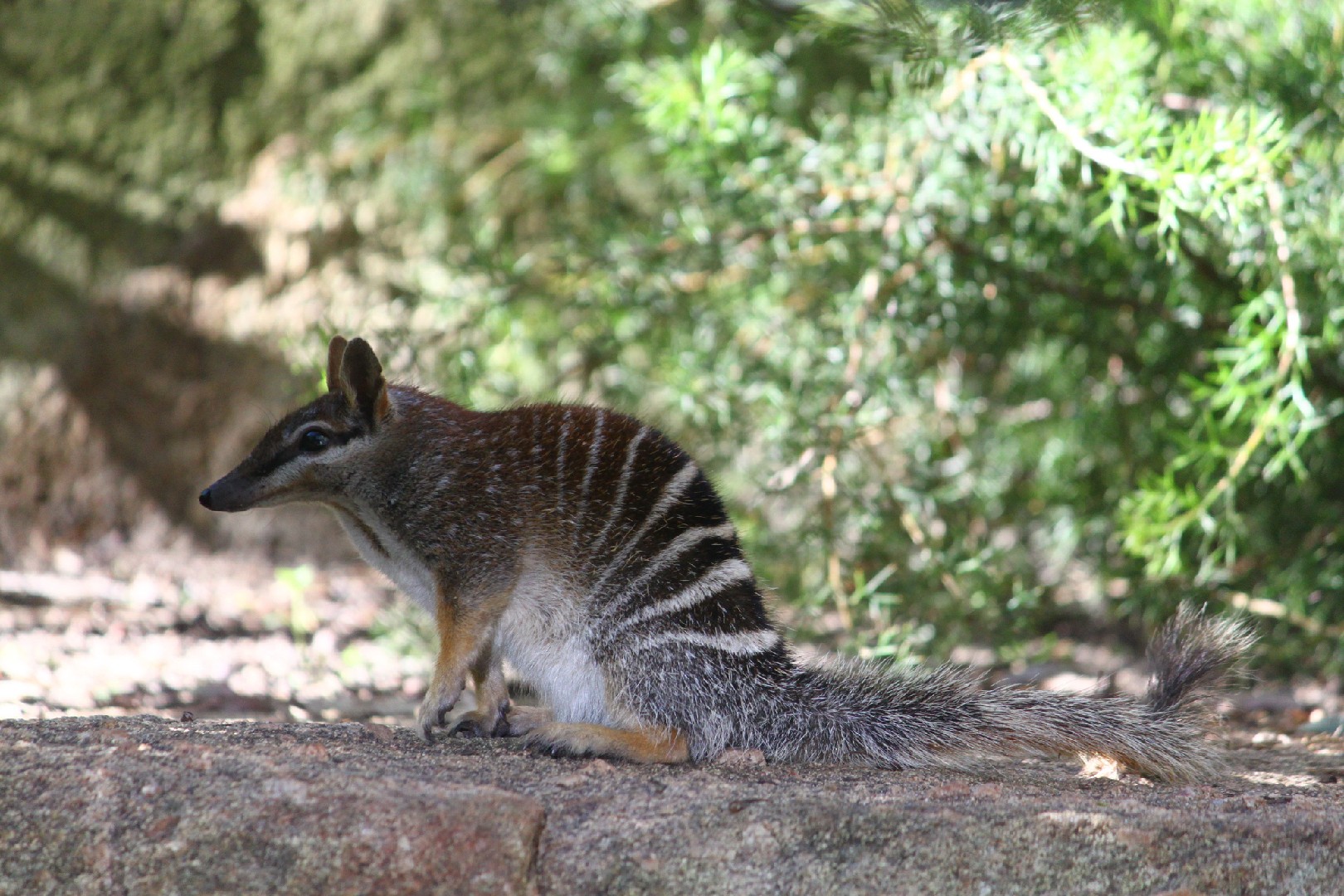Numbat
A species of Myrmecobius, Also known as Banded anteater Scientific name : Myrmecobius fasciatus Genus : Myrmecobius
Numbat, A species of Myrmecobius
Also known as:
Banded anteater
Scientific name: Myrmecobius fasciatus
Genus: Myrmecobius
Content
Description General Info
 Photo By Luke Durkin , used under CC-BY-2.0 /Cropped and compressed from original
Photo By Luke Durkin , used under CC-BY-2.0 /Cropped and compressed from original Description
The numbat is a small, colourful creature between 35 and 45 centimetres (14 and 18 in) long, including the tail, with a finely pointed muzzle and a prominent, bushy tail about the same length as its body. Colour varies considerably, from soft grey to reddish-brown, often with an area of brick red on the upper back, and always with a conspicuous black stripe running from the tip of the muzzle through the eyes to the bases of the small, round-tipped ears. Between four and eleven white stripes cross the animal's hindquarters, which gradually become fainter towards the midback. The underside is cream or light grey, while the tail is covered with long, grey hair flecked with white. Weight varies between 280 and 700 g (9.9 and 24.7 oz). Unlike most other marsupials, the numbat is diurnal, largely because of the constraints of having a specialised diet without having the usual physical equipment for it. Most ecosystems with a generous supply of termites have a fairly large creature with powerful forelimbs bearing heavy claws. Numbats are not large, and they have five toes on the fore feet, and four on the hind feet. However, like other mammals that eat termites or ants, the numbat has a degenerate jaw with up to 50 very small, nonfunctional teeth, and although it is able to chew, rarely does so, because of the soft nature of its diet. Uniquely among terrestrial mammals, an additional cheek tooth is located between the premolars and molars; whether this represents a supernumerary molar tooth or a deciduous tooth retained into adult life is unclear. As a result, although not all individuals have the same dental formula, in general, it follows the unique pattern: 4.1.3.1.43.1.4.1.4 Like many ant or termite eating animals, the numbat has a long and narrow tongue coated with sticky saliva produced by large submandibular glands. A further adaptation to the diet is the presence of numerous ridges along the soft palate, which apparently help to scrape termites off the tongue so they can be swallowed. The digestive system is relatively simple, and lacks many of the adaptations found in other entomophagous animals, presumably because termites are easier to digest than ants, having a softer exoskeleton. Numbats are apparently able to gain a considerable amount of water from their diets, since their kidneys lack the usual specialisations for retaining water found in other animals living in their arid environment. Numbats also possess a sternal scent gland, which may be used for marking their territories. Although the numbat finds termite mounds primarily using scent, it has the highest visual acuity of any marsupial, and, unusually for marsupials, has a high proportion of cone cells in the retina. These are both likely adaptations for its diurnal habits, and vision does appear to be the primary sense used to detect potential predators. Numbats are able to enter a state of torpor, which may last up to fifteen hours a day during the winter months. 
General Info
Lifespan
5-10 years
Diet
Primarily insectivorous, the diet of numbat largely consists of termites and ant larvae. It uses its elongated snout and sticky tongue to extract these from nests and underground.
Appearance
Numbat is a small marsupial with an elongated snout and cylindrical body shape. Its fur is dense and soft, predominantly light grey, offset by distinctive dark vertical stripes across the back. It possesses a bushy, slightly flattened tail that also features bands. A distinguishing characteristic is its large erect ears. There are no significant differences in appearance between genders, ages or subspecies.
Behavior
Numbat is a predominantly nocturnal and solitary creature known for its powerful digging capabilities, allowing it to forage for termites and ants effectively. It marks its territory via scent, using its anal glands. During mating season, however, it exhibits temporary social behavior when males and females pair off.
Population
Decreasing